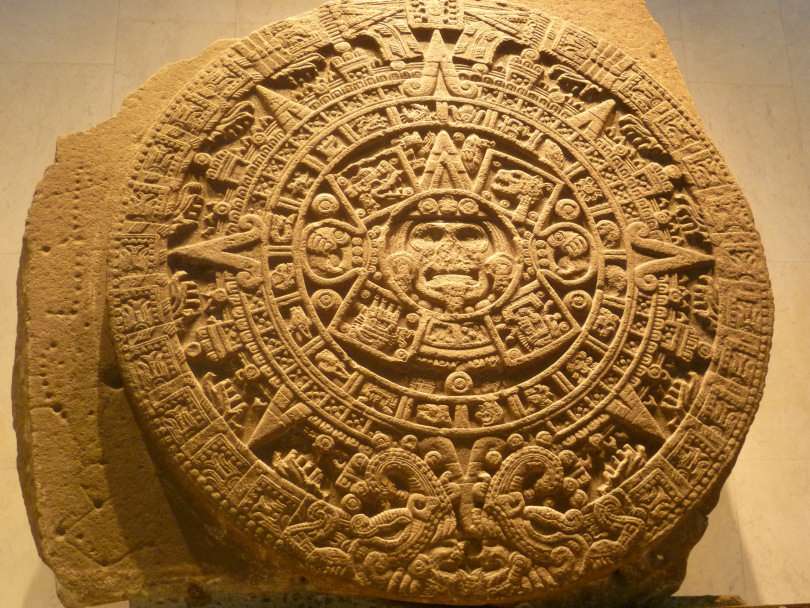Mayan Apocalypse or Y2K?
Mesoamerican calendar confusion causes 2012 chaos.

The intricate geometric carving featured above has become a symbol of the Mayan apocalypse, projected by their calendar to arrive on December 21, 2012. In reality, the stone is (a) not Mayan, and (b) probably not even a calendar. The Aztec Sun Stone, which postdates Mayan civilization by 500 years, has absolutely nothing to say about when the world will end.
The Maya did have some impressive, if less photogenic, calendars. Contemporary apocalyptic predictions (and terrible John Cusack movies) are inspired by a quirk of their Long Count Calendar. Starting at the beginning of creation—about August 11, 3114 B.C.—this sophisticated system is designed to help track dates for the next 13 b'ak'tuns, or a little over 5,000 years. When the calendar runs out, the doomsayers theorize, Earth will be destroyed by an asteroid called Nibiru, or possibly experience global spiritual awakening. All this, despite scant evidence that historical Maya believed any such thing.
In fact, December 21, 2012, is likely the Mayan equivalent of Y2K. The calendar ticking over to 13.0.0.0.0 doesn't necessarily signify the endtimes. For day-to-day use, Mayans preferred more prosaic Calendar Round dates—perhaps the source of confusion with the round Aztec stone. When that calendar's 52-year cycle was up, the Maya simply threw a party and started a new one.


Show Comments (89)